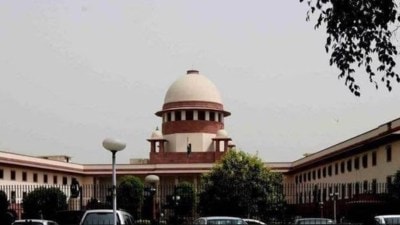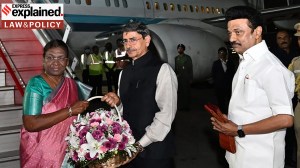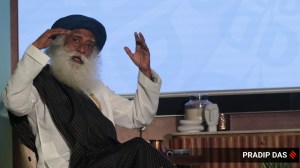Testing times
When the White House switchboard put through the Indian Prime Minister's Office on Friday morning to enable President Clinton greet Prime Mi...

When the White House switchboard put through the Indian Prime Minister’s Office on Friday morning to enable President Clinton greet Prime Minister Vajpayee on his assuming office, nuclear matters were farthest from an agreeable conversation they had. Despite the new BJP government’s aggressive nuclear posturing, the Clinton administration has sought to downplay it, saying the BJP’s pledge to induct nuclear weapons into the Indian arsenal did not appear to cross any new threshold, since it was conditional on the need and the situation. But as he ended the call, Clinton told Vajpayee that he was sending the US ambassador to the UN Bill Richardson to India next month, along with the South Asia pointmen Rick Inderfurth of the State Department and Bruce Riedel of the National Security Council.
“I look forward to visiting India later this year, Mr Prime Minister. I hope they will help us in having a very open and mutual exchange of views between our two governments and resume the strategic dialogue we arehaving,” Clinton said.
The composition of the team, and President Clinton’s interest in conveying it, is interesting. Richardson is a former Congressman from New Mexico, who, as the US envoy at the UN, has the big picture on India’s bid for a permanent Security Council seat. A pushy, persuasive pol and an acclaimed negotiator, he has been to India before, notably to seek the release of hostages held in Kashmir by the Harkat-ul Ansar. Inderfurth is not only Assistant Secretary for South Asia, but an experienced arms control expert to boot and a confidant of Secretary of State Madeleine Albright. And Riedel, a former intelligence analyst, is probably the one official in the administration who has tracked India and Indian nuclear policy the longest. Between them, the troika is expected to do the groundwork for Clinton’s South Asian agenda this coming winter.
The agenda is crucial — and it is no big secret. By his own admission, President Clinton’s top foreign policy priority in his second term issecuring the pact banning nuclear tests, known by the familiar acronym CTBT (Comprehensive Test Ban Treaty). Another treaty to suspend production of bomb-making fissile material is also in the works, but that comes later. New Delhi is a holdout on the CTBT, as is Pakistan, which will sign only if India does. North Korea is another notable renegade. But for the treaty to enter into force, India has to sign the dotted line because of an entry-into-force provision Washington engineered to entrap New Delhi. Otherwise the treaty is doomed.
Some 150 countries have already signed the treaty, though many, including the United States itself, is yet to ratify it. Last week, even as the President periodically received updates on the process of government formation in India, John Holum, the administration’s premier arms control honcho, was urging the US Senate to ratify the treaty so that the President could go to South Asia armed with pact so he could have the leverage to give India a talking to.
In fact, if Clintoncomes to India in September as is now scheduled, it will be exactly one year shy of a deadline that augurs trouble for India. Unless the CTBT has entered into force by September 1999, a conference of signatories will gather in New York to discuss what steps need be taken to persuade recalcitrant nations to sign the dotted line. Although the US has not publicly held out any threats, the consequences of India not signing could be grave. A cut off in US aid India can easily endure given that it is a pittance. But anything more — like Washington voting against India at multilateral institutions like IMF-World Bank could be difficult for New Delhi to swallow, not to speak of the strains in the relations. The word sanctions has also been heard in this context.
All that is a good 18 months away and few experts actually foresee that eventuality. Nevertheless, the next six months — the run-up to Clinton’s visit — are going to be crucial. Now that a new leadership has taken up the reigns of power and look likebeing in control for some time, US officials are expected to come bearing down with proposals. Already, there is a blanket ban in Washington on any pronouncements on the nuclear issue pertaining to India and the US. Asked to comment on how the two sides hoped to break the deadlock, former US Ambassador to New Delhi Frank Wisner demurred, saying the situation called for “discretion and dialogue” through only government channels. “More than ever, because of President Clinton’s visit, the matter should be discussed only privately through diplomatic channels. We should avoid any surprises and see if we can have a meeting of minds,” Wisner cautioned.
The question analysts are now examining is whether the US can cut a deal with India by offering some incentive to sign. Some experts feel that despite its intransigence, New Delhi is in a no-win situation because although it will retain the option of conducting a nuclear test by not signing the CTBT, it simply cannot afford to test because of the universalopprobrium such a test would invite. Besides, the domestic cost of being seen as capitulating to the US would be too high to bear. Could there be something the Washington could offer that would get New Delhi on board without a domestic loss of face? For instance, the US won over the French to their side in 1996 by promising them critical nucleardata that France said a ban on testing would deny them. Washington has also eased up on selling nuclear power technology to China. Why then not to India?
But for this to happen, analysts say New Delhi should first show some interest that it is open to a deal. So far, India has appeared to be hidebound. One possibility is for New Delhi to pitch for a Permanent Security Council seat. “Richardson is also the right person for India to make it’s case for a Security Council seat,” says Michael Krepon, an arms control expert who heads the Stimson Center and is a trenchant critic of new Delhi’s position. Washington is also expected to sell India the idea that even if itsigned, it can always withdraw from the pact under a “supreme national interest” clause in the CTBT. The White House itself is positing this before its own recalcitrant Senate which is yet to ratify the treaty (see box). With the BJP government having just taken office, the expectation here is it will take a few weeks to get a handle on foreign policy matters, particularly something as crucial to national interest as the test ban treaty. But from here, the gong has already sounded.Domestic hurdles
While the Clinton administration begins to turn the heat on India to sign the nuclear test ban treaty, two domestic snafus are threatening to scupper White House’s big ticket foreign policy item for the second term.
First, the US Senate itself is yet to ratify the CTBT. Given the Republican majority and its record of arms control anathema, experts feel the Clinton administration will have a tough time convincing law-makers to clear the pact. Legislative analysts say unless there is a major change in theSenate, like Richard Lugar replacing Jesse Helms on the Senate Foreign Relations Committee, the treaty will never get past the lawmakers. But the administration is equally determined to get the deal cleared and both President Clinton and vice-president Gore are expected to work overtime to achieve this second term foreign policy crown. If the Senate blocks the deal, then India has some breathing space.
More pertinent to India is the sub-critical nuclear tests the US is brazenly conducting in what many experts say is a clear violation of the CTBT. Last week, even as Clinton was phoning Vajpayee, American scientists from the Los Alamos National Laboratory were readying an experiment codenamed Stagecoach at a Nevada test site. In the experiment, five packages of plutonium weighing around 2 pounds would be detonated by conventional explosives to study. US experts argue that since the experiment does not set off a chain reaction (therefore they are called subcritical tests) it does not violate the CTBT. Butanti-nuclear activists even in the US scoff at the claim and say the CTBT explicitly bars "any nuclear weapons test explosion or any other nuclear explosion." They say the experiments go much further than merely testing the reliability of existing nuclear weapons as the establishment claims and is in fact aimed at designing a new generation of nuclear weapons.
But the White House, under pressure from law makers, is arguing that the CTBT allows pure-fusion research, even at the risk of being branded a nuclear hypocrite by the rest of the world. In part, this is also because of the tremendous clout wielded by the weapons labs of New Mexico (incidentally Richardson’s home state) and California, which between them employ some 30,000 scientists. Under a plan called Science-based stockpile stewardship program, the US government is committed to spending $40 billion over the next decade on these labs, mostly for conducting sub-critical experiments.
Photos




- 01
- 02
- 03
- 04
- 05



























